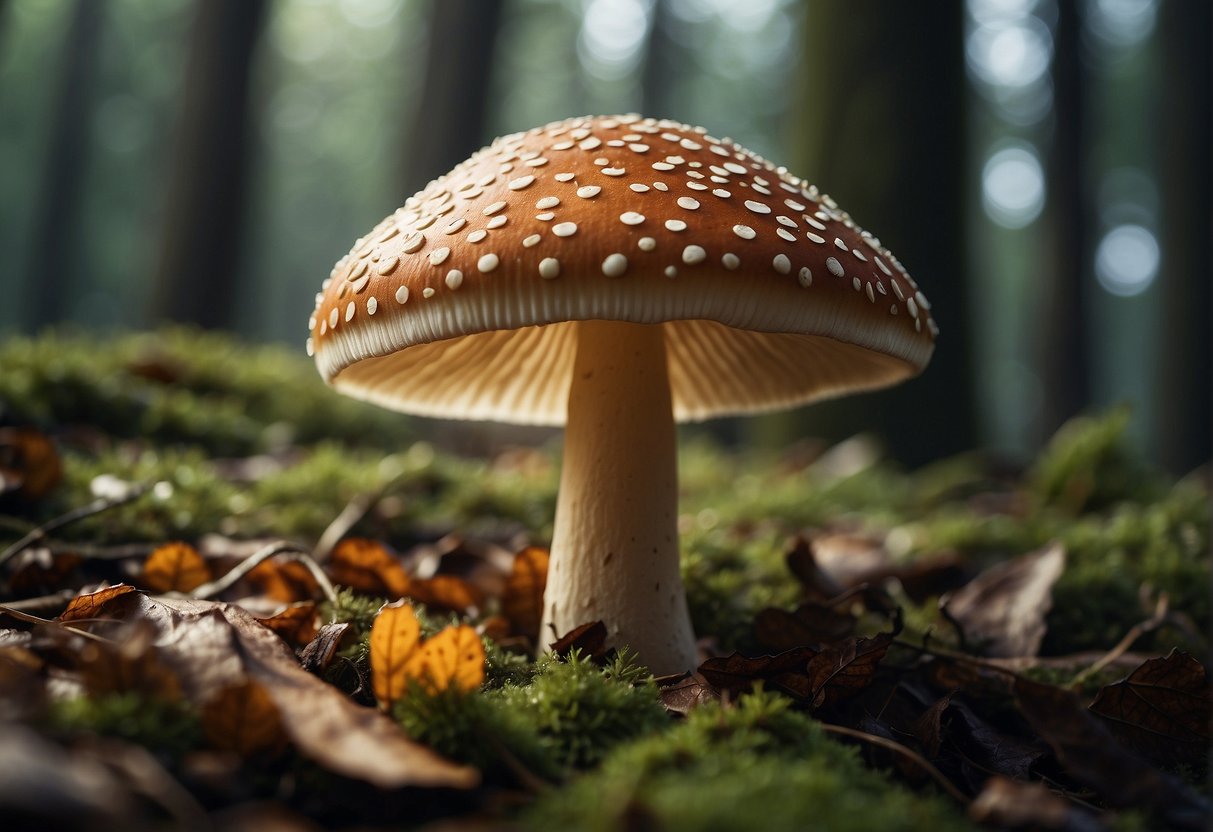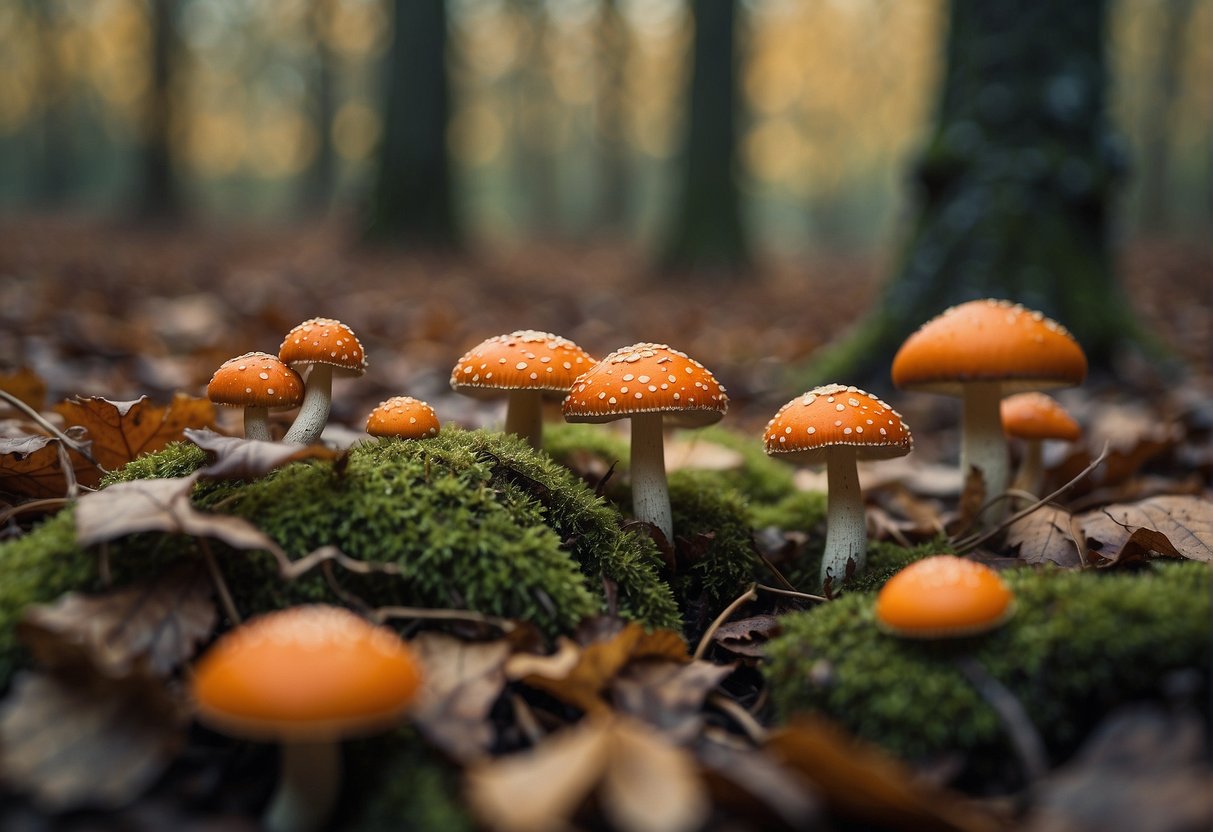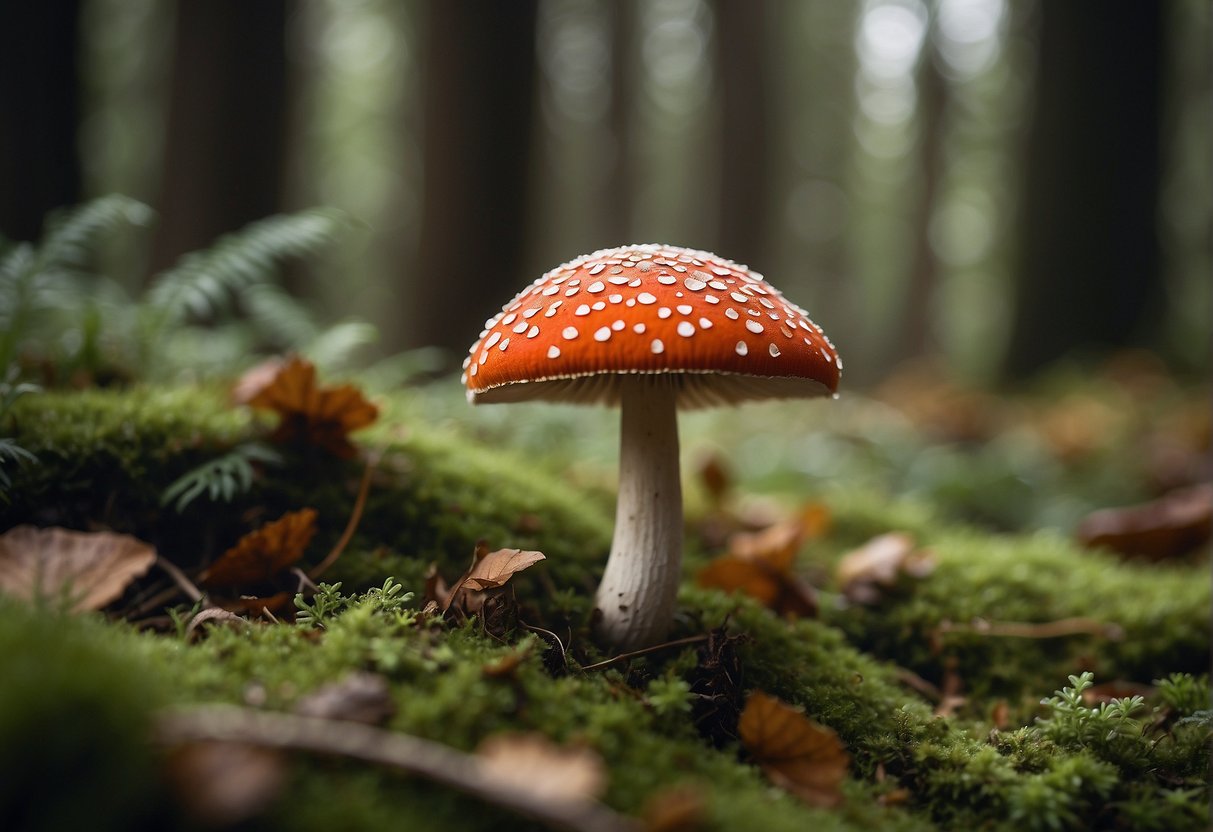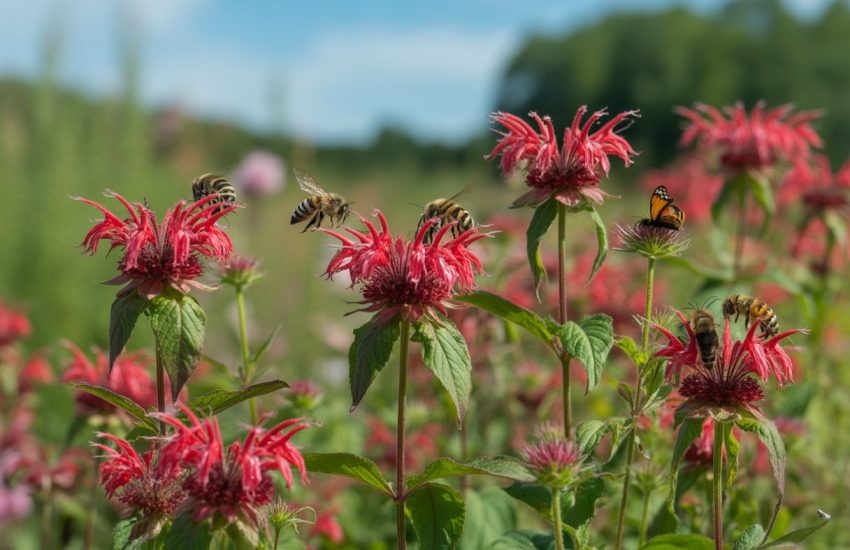What is a Toadstool? A Clear and Neutral Explanation
A toadstool is a type of fungus that is often associated with poisonous mushrooms. While many people use the terms “toadstool” and “mushroom” interchangeably, there are some key differences between the two. Toadstools typically have a cap that is wider than the stem, and they often have a distinctive red or white coloration.

Toadstools are part of the larger group of fungi, which also includes mushrooms, yeasts, and molds. Fungi are unique organisms that play an important role in many ecosystems. They are decomposers, breaking down dead organic matter and recycling nutrients back into the soil. Some fungi are also symbiotic, forming mutually beneficial relationships with other organisms such as plants.
Despite their important ecological role, some toadstools and mushrooms can be highly toxic to humans and animals. It is important to be able to accurately identify different species of fungi in order to avoid accidental poisoning. In this article, we will explore the characteristics of toadstools and how they differ from other types of fungi.
Defining Toadstools

Toadstools are a type of fungus that are often confused with mushrooms. While they share some similarities, they also have distinct differences that set them apart. In this section, we will define toadstools and explore their characteristics, as well as the differences between toadstools and mushrooms.
Characteristics of Toadstools
Toadstools are characterized by their cap, gills, and spores. The cap of a toadstool is the top part of the fruiting body, and can vary in shape, size, and color depending on the species. Some toadstools have caps that are flat, while others are convex or even funnel-shaped. The color of the cap can range from bright red to dull brown.
Underneath the cap, toadstools have gills that radiate out from the stem. These gills are where the spores are produced, which are responsible for the reproduction of the fungus. Toadstool spores can be released into the air and carried by the wind, or they can be spread by animals or insects.
Toadstool vs Mushroom
While toadstools and mushrooms are both types of fungi, there are some key differences between them. One of the main differences is that toadstools are generally considered to be poisonous, while mushrooms can be either edible or poisonous.
Another difference is in their appearance. Toadstools typically have caps that are more brightly colored than mushrooms, and their gills are often more widely spaced. Toadstools also tend to have a more bulbous base, while mushrooms have a more slender stem.
One well-known example of a toadstool is the Amanita muscaria, which is a bright red toadstool with white spots. This toadstool is toxic and can cause hallucinations and other symptoms if ingested.
In conclusion, toadstools are a type of fungus that are characterized by their cap, gills, and spores. They are often confused with mushrooms, but there are distinct differences between the two. Toadstools are generally considered to be poisonous, and one well-known example is the Amanita muscaria.
Ecological Role and Habitat
Toadstools in Ecosystems
Toadstools play an essential role in ecosystems by breaking down dead organic matter and returning nutrients to the soil. They are decomposers, meaning they break down dead plant and animal material, such as fallen leaves, branches, and dead animals, into simpler compounds. This process releases nutrients back into the soil, which can then be used by other plants and organisms. In this way, toadstools contribute to the health and productivity of ecosystems.
Common Habitats
Toadstools can be found in a variety of habitats, from lawns to forests. They often grow in soil rich in organic matter, such as leaf litter or decaying wood. Some species of toadstools form symbiotic relationships with the roots of trees, providing nutrients to the tree in exchange for sugars produced by the tree through photosynthesis. These toadstools are known as mycorrhizal fungi and are important for the health of many forest ecosystems.
Toadstools can also be found in disturbed habitats, such as clearcut areas or construction sites. In these areas, toadstools may be the first organisms to colonize the disturbed soil, helping to stabilize the soil and prepare it for the growth of other plants.
Overall, toadstools are an important part of many ecosystems, contributing to the cycling of nutrients and the health of the soil. Their ability to grow in a variety of habitats makes them a versatile and adaptable group of organisms.
Toadstools and Human Interaction

Toadstools, also known as mushrooms, have a long history of interaction with humans. From their use as food to their role in folklore and culture, they have been an important part of human life for centuries. In this section, we will explore the different ways in which humans have interacted with toadstools.
Edible and Poisonous Varieties
One of the most important aspects of toadstools for human interaction is their edibility. While some toadstools are edible and even considered delicacies in some cultures, others are highly poisonous and can cause serious illness or even death. It is important to be able to identify the different types of toadstools and know which ones are safe to eat.
Mushroom identification can be a complex task, requiring knowledge of the different physical characteristics of each species. Toadstools can be identified by their cap shape, gill structure, stem and spore print, among other features. Mycologists, scientists who study fungi, can provide valuable information on mushroom identification.
Toadstools in Culture
Toadstools have also played an important role in human culture. They have been featured in folk tales and fairy tales, often as magical or mystical objects. In many cultures, toadstools are associated with luck, and finding one is considered a sign of good fortune.
In addition, toadstools have been used in various forms of art, including painting and sculpture. They have also been used in gardening, as they can be grown for both ornamental and edible purposes.
Overall, toadstools have had a significant impact on human interaction and culture throughout history. While caution should be exercised when consuming them, they remain an important and fascinating part of the natural world.
Identifying and Handling Toadstools

Mushroom Identification Tips
Toadstools are a type of mushroom that can be found in various habitats, including forests, meadows, and even lawns. They are characterized by their fruiting bodies, which consist of a cap and a stalk. To identify a toadstool, it is important to examine the cap, stalk, and any other features that may be present.
One of the most important features to look for when identifying a toadstool is the presence of gills or pores on the underside of the cap. Gilled toadstools have thin, blade-like structures that radiate out from the stalk, while pored toadstools have small, round holes on the underside of the cap. Another important feature is the spore print, which can be obtained by placing the cap on a piece of paper overnight and observing the color of the spores that are released.
It is also important to pay attention to the color, shape, and texture of the cap and stalk. Some toadstools have distinctive rings around the stalk, while others have scales or warts on the cap. By carefully examining these features, it is possible to identify many different types of toadstools.
Safety Precautions
While many toadstools are harmless, some species can be toxic to humans and pets. It is important to exercise caution when handling toadstools, and to avoid consuming any toadstools that have not been positively identified as safe to eat.
Symptoms of toadstool poisoning can include nausea, vomiting, diarrhea, abdominal pain, and in severe cases, liver or kidney damage. If you suspect that you or someone else has ingested a toxic toadstool, seek medical attention immediately.
To reduce the risk of accidental ingestion, it is important to keep pets and children away from areas where toadstools are growing. If you are unsure whether a toadstool is safe to handle, it is best to err on the side of caution and avoid touching it altogether.
In conclusion, identifying and handling toadstools requires careful observation and knowledge of their various features. By following the tips outlined in this section and exercising caution when handling toadstools, it is possible to safely enjoy these fascinating fungi in their natural habitat.
Frequently Asked Questions

How can you distinguish between a mushroom and a toadstool?
Mushrooms and toadstools are both types of fungi, but the term “toadstool” is often used to refer to poisonous mushrooms. One way to distinguish between the two is by their physical characteristics. Toadstools often have bright colors, such as red or yellow, and may have a distinctive odor. Mushrooms, on the other hand, tend to have more muted colors and a more subtle aroma. However, it’s important to note that not all brightly colored mushrooms are toxic, so it’s always best to err on the side of caution and consult an expert if you’re unsure.
What is the scientific name for a toadstool?
Toadstool is not a scientific term, but rather a common name for certain types of mushrooms that are toxic to humans and animals. The scientific name for a mushroom depends on the species, but all mushrooms belong to the kingdom Fungi.
Are there any edible varieties of toadstools?
No, toadstools are generally considered to be toxic and should not be consumed. Some mushrooms that are commonly referred to as toadstools, such as the fly agaric, can be deadly if ingested.
What are the toxic properties of toadstools?
Toadstools contain a variety of toxins that can cause a range of symptoms, from mild stomach upset to organ failure and death. Some of the most dangerous toxins found in toadstools include amatoxins, which can cause liver and kidney damage, and muscarine, which can cause sweating, salivation, and other symptoms.
Is it safe for dogs to be around toadstools?
No, it is not safe for dogs to be around toadstools. Dogs are often attracted to the smell and taste of mushrooms, but many types of mushrooms can be toxic to them. Symptoms of mushroom poisoning in dogs can include vomiting, diarrhea, lethargy, and seizures. If you suspect your dog has ingested a mushroom, seek veterinary attention immediately.
What precautions should be taken when handling toadstools?
Toadstools should be handled with caution, as many species are toxic to humans and animals. It’s important to wear gloves and wash your hands thoroughly after handling mushrooms, and to avoid touching your face or mouth while handling them. If you plan to consume mushrooms, be sure to properly identify them and cook them thoroughly to destroy any toxins that may be present. If you’re unsure about the safety of a particular mushroom, consult an expert before consuming it.


